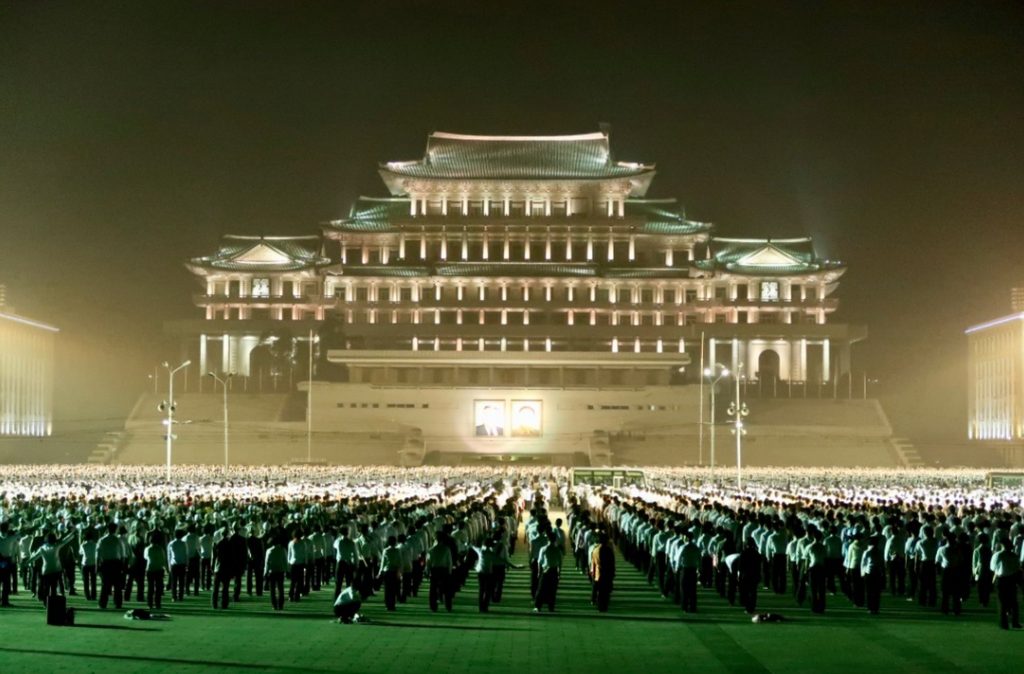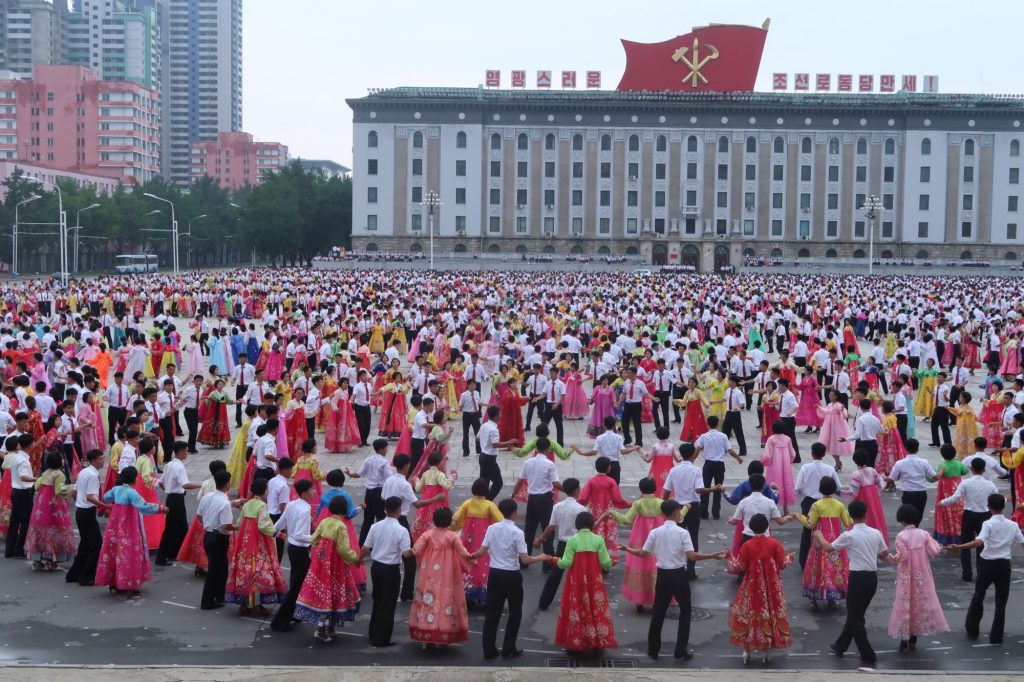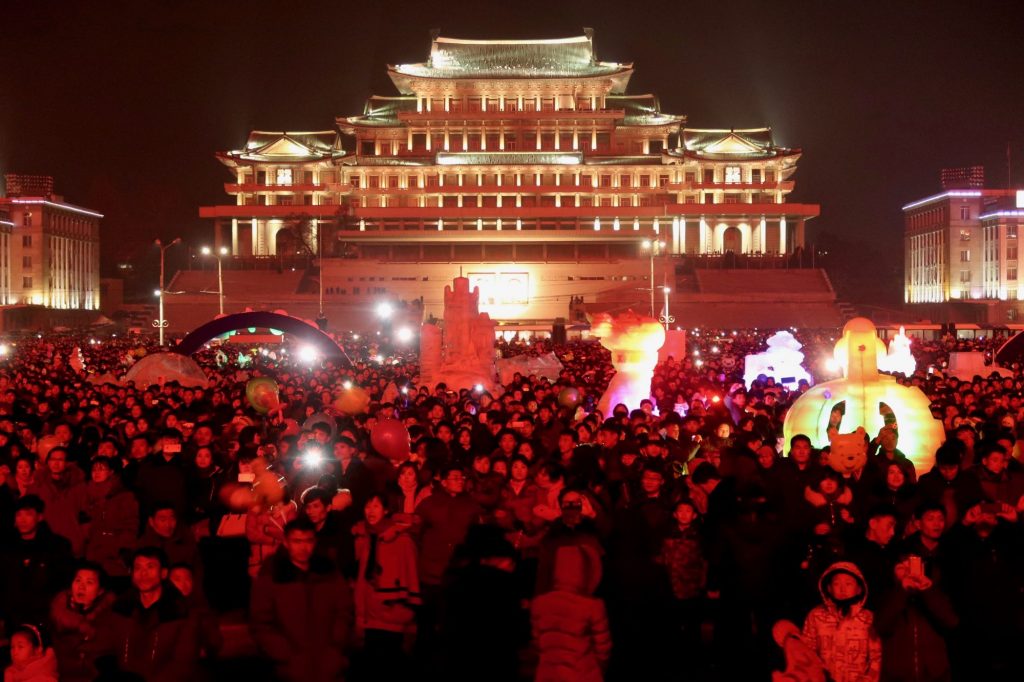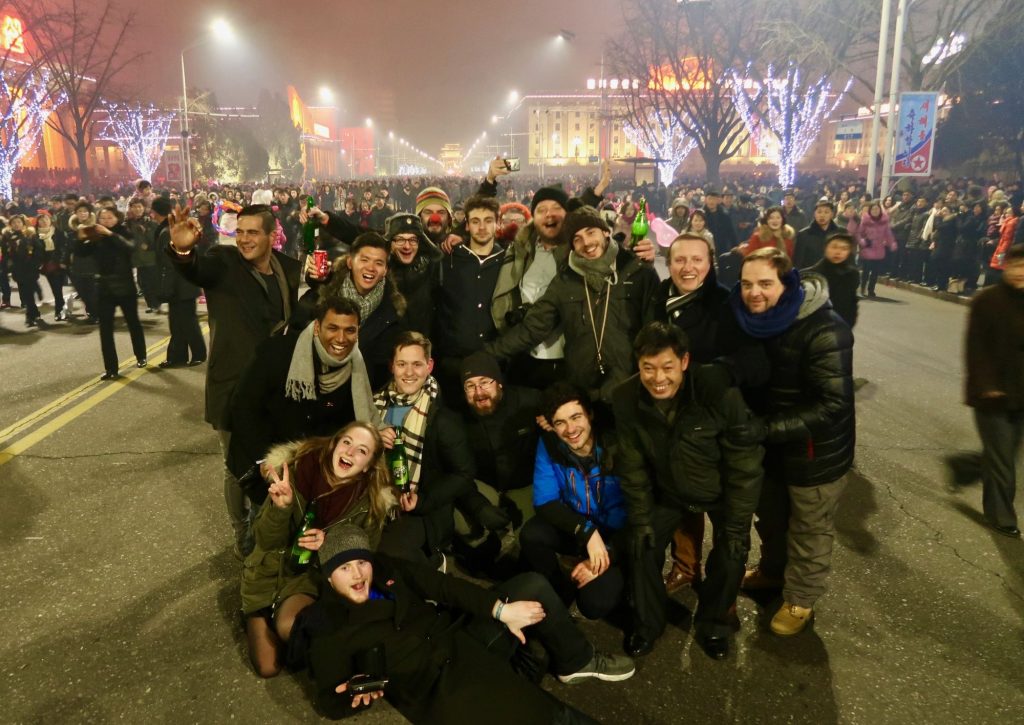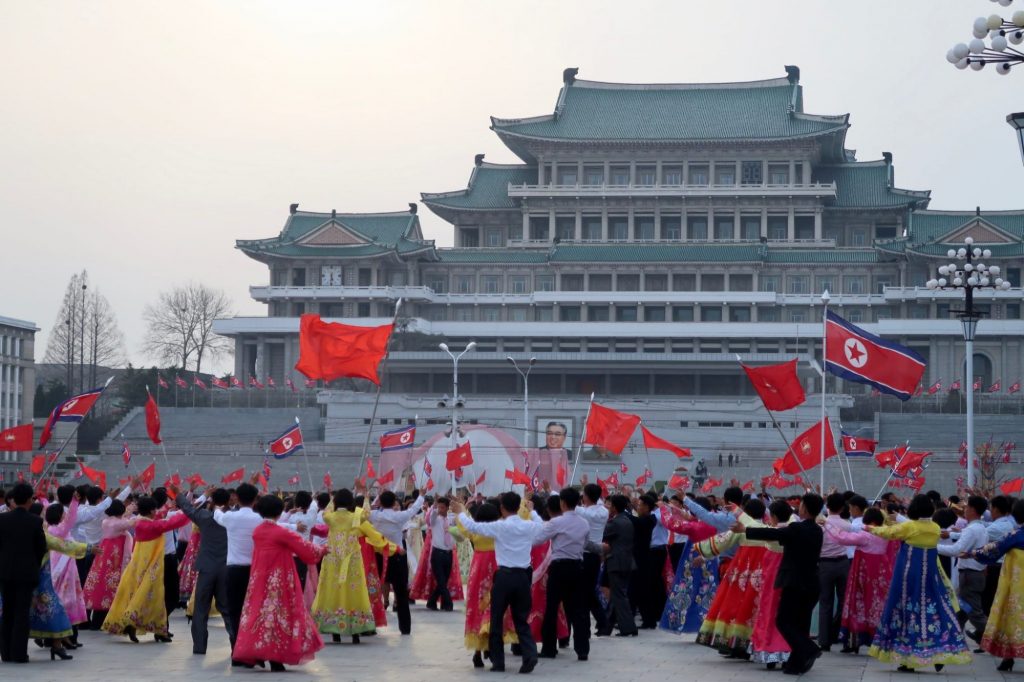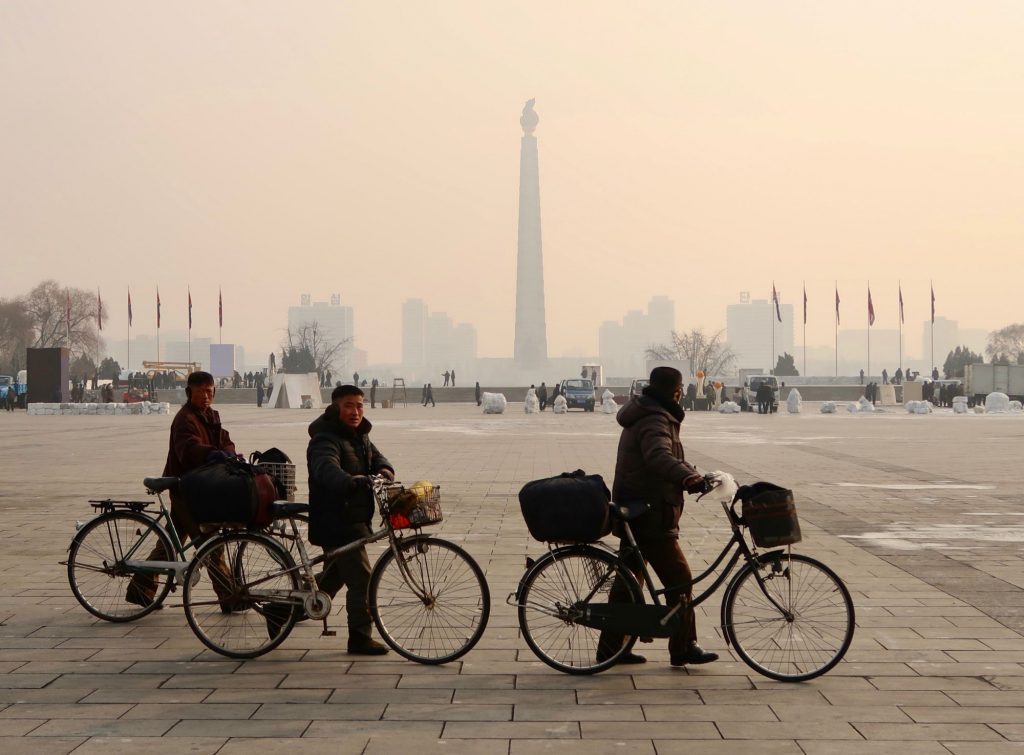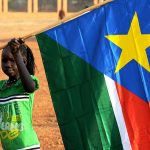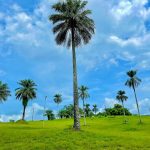Introduction
Kim Il Sung Square is North Korea’s largest public square and is located in the centre of Pyongyang, the capital. The square is 75,000 square meters (807,293 square feet) and currently ranks as the 51st largest public square in the world.
Kim Il Sung Square is most famous for hosting North Korea’s military parades which is often headlining western and local DPRK media. During certain celebrations mass dances, rallies and the new year’s celebrations with live performances from the Moranbong band, ice sculptures and fireworks are also held at the square.

Rallies held at the square 
YPT Group posing at the square
Kim Il Sung Square history
Named after the founding leader and eternal President Kim Il Sung, it was completed in August 1954 as the country began to build itself after being largely devastated by the Korean War which ravaged the nation from 1950 to 1953.
Kim Il Sung Square can hold up to 100,000 people and is paved with granite titles. Lined perfectly in both north-south and east-west directions are white spots painted on the ground. This is how infantry and performers keep in absolute perfect order during the military parades with thousands of people.
From the middle of the square, you have great views to both the front and back. Looking out towards the river you have great views of the Taedong River with the the Juche Tower standing tall on the other side. Towards the front side, you have the impressive Grand People’s Study House building completing the backdrop to the square.
Kim Il Sung square is a must-visit attraction for anyone visiting Pyongyang. Together with its impressive surroundings, it won’t disappoint.
Located just a short walk away is the Foreign Language Book Store, where you can find many DPRK publications translated into multiple languages. To the left and right side of the square, you will find the Korean National Art Gallery, as well as the Korean Central History Museum.
Korean National Art Gallery
The Korean National Art Gallery was opened alongside the square in 1954 with a total floor space of 11,000 square meters. It includes over 22 showrooms, an exhibition hall, and rooms for preserving artwork. It houses collections ranging from murals of mausoleums to prints, sculptures and handicrafts.
Korean Central History Museum
The Korean Central History Museum opened in 1945 with a total floor space of 10,000 square meters. It includes 19 rooms in which hold collections of more than 100,000 relics and materials from the primitive society to the modern age.
Austrian Café
A popular stop for tour groups who are spending a week or longer in the DPRK, the Joint-venture Austrian Café named Ryongwang Coffee Shop is one of the best cafes in Pyongyang to get a good cup of coffee. Prices range around $5 and with imported UHT milk from Austria, it’s well worth a visit if you’re looking for a caffeine fix.


